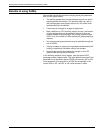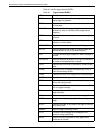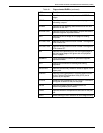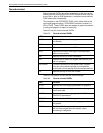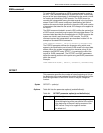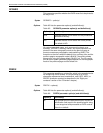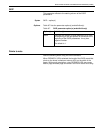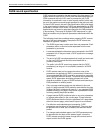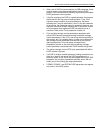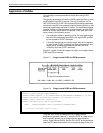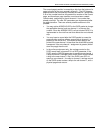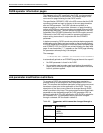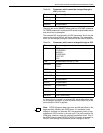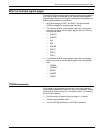
SPECIFYING DYNAMIC JOB DESCRIPTOR ENTRIES (DJDES)
8-10 XEROX DOCUPRINT 180 LPS PDL REFERENCE
DJDE record specification
DJDE records are created by the user as part of the data stream. The
system looks for them only if a DJDE prefix has been specified by an
IDEN command within the JDL used to process the job. DJDE
information is contained in one or more records, each of which may
be up to the maximum record length specified for the job input data.
For each DJDE record, the prefix (the identification field) must begin
in the same location in the record. DJDEs are terminated by an END
parameter in the last DJDE record. All specified DJDE information is
applied at the next record or page boundary after the END parameter
is encountered. There may be multiple DJDE sequences in a job.
Each set modifies only the specific parameters mentioned within the
DJDE.
The following should be considered when preparing DJDE records
as part of the input data stream. Examples of DJDE records are
illustrated in figures 8-1 and 8-2.
• The DJDE record may contain more than one parameter. Each
parameter within a record must be separated from the next
parameter by a comma.
• Lowercase alphabetic characters are not accepted in the DJDE
parameter line. If they are used, a DJDE syntax error message
is displayed.
• The end of a DJDE record parameter that is split and continued
on the next DJDE record should be terminated with a ,;
(comma, semicolon).
• The prefix in the DJDE record may appear after the DJDE
parameter(s) as long as it is consistently located in all DJDE
records.
• DJDE records need not be consecutive since none of the
parameters are applied until END; is encountered. However, it
is recommended that DJDE records be consecutive, especially
when used with delimiter records. To optimize input processing
speed, DJDE parameters should be grouped into as few
records as possible. A group of DJDE records terminated by an
END parameter is called a packet.
• Only one page-oriented packet can be deferred to the next
page. If a page-oriented DJDE packet is received after the start
of page A so that it is deferred to page A+1, any separate DJDE
packets following it on page A may cause unpredictable results
and may possibly be printed as data.
• A page-oriented DJDE positioned prior to any print parameters
on a page takes effect on the current page. A page-oriented
DJDE positioned after the first print parameter on a page takes
effect on the next page, unless end-of-report is encountered.
• For delimiter mode stacked report processing, DJDE
parameters may be placed in the report body. They may also
be placed within or after (but not before) the delimiter record
packet.
• For change mode stacked reports, the DJDE parameters may
be placed within the body of the stacked report, where the
DJDE records contain the same change field contents as the
report to which the DJDE applies.



